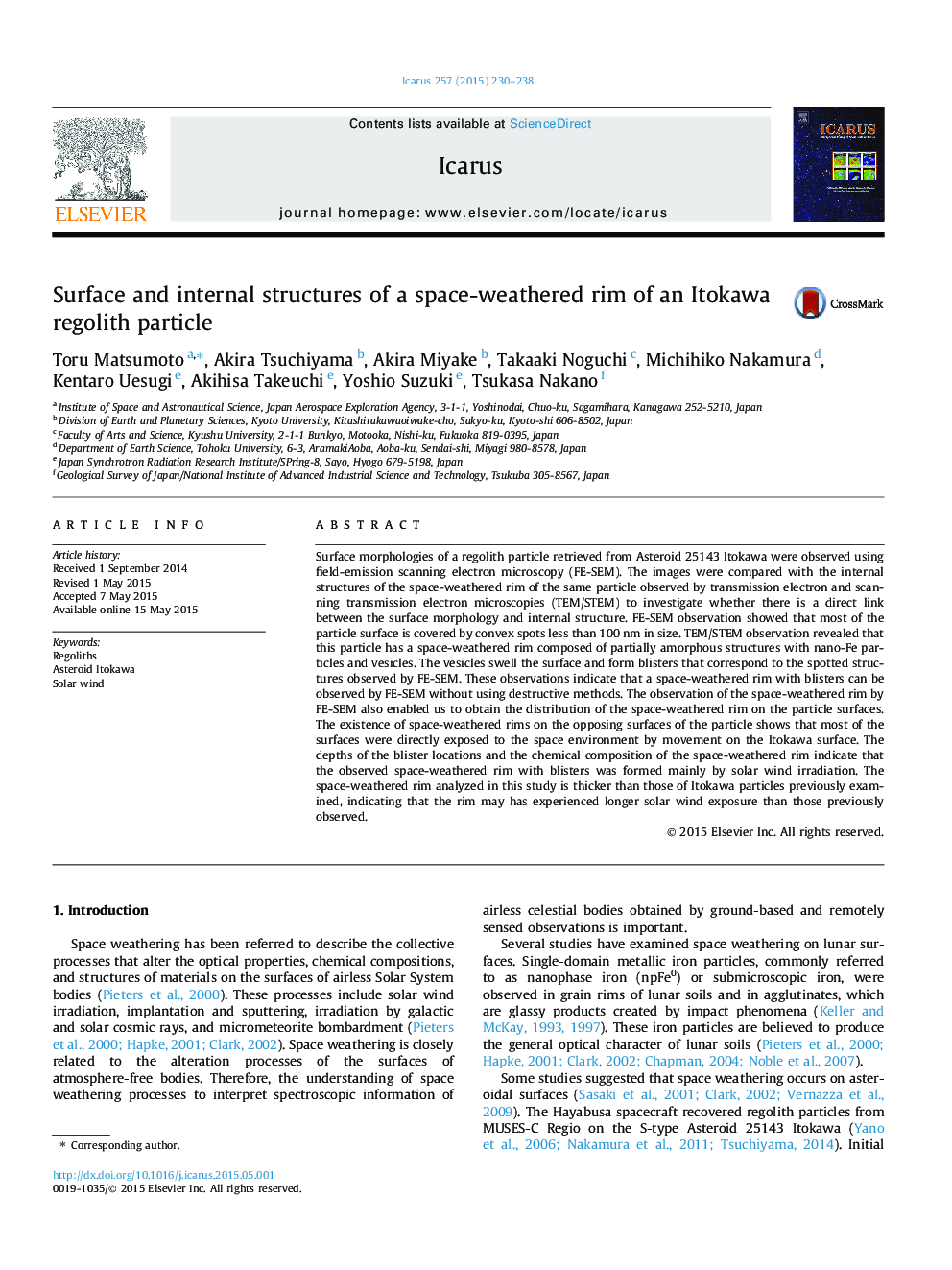| Article ID | Journal | Published Year | Pages | File Type |
|---|---|---|---|---|
| 8136111 | Icarus | 2015 | 9 Pages |
Abstract
Surface morphologies of a regolith particle retrieved from Asteroid 25143 Itokawa were observed using field-emission scanning electron microscopy (FE-SEM). The images were compared with the internal structures of the space-weathered rim of the same particle observed by transmission electron and scanning transmission electron microscopies (TEM/STEM) to investigate whether there is a direct link between the surface morphology and internal structure. FE-SEM observation showed that most of the particle surface is covered by convex spots less than 100Â nm in size. TEM/STEM observation revealed that this particle has a space-weathered rim composed of partially amorphous structures with nano-Fe particles and vesicles. The vesicles swell the surface and form blisters that correspond to the spotted structures observed by FE-SEM. These observations indicate that a space-weathered rim with blisters can be observed by FE-SEM without using destructive methods. The observation of the space-weathered rim by FE-SEM also enabled us to obtain the distribution of the space-weathered rim on the particle surfaces. The existence of space-weathered rims on the opposing surfaces of the particle shows that most of the surfaces were directly exposed to the space environment by movement on the Itokawa surface. The depths of the blister locations and the chemical composition of the space-weathered rim indicate that the observed space-weathered rim with blisters was formed mainly by solar wind irradiation. The space-weathered rim analyzed in this study is thicker than those of Itokawa particles previously examined, indicating that the rim may has experienced longer solar wind exposure than those previously observed.
Keywords
Related Topics
Physical Sciences and Engineering
Earth and Planetary Sciences
Space and Planetary Science
Authors
Toru Matsumoto, Akira Tsuchiyama, Akira Miyake, Takaaki Noguchi, Michihiko Nakamura, Kentaro Uesugi, Akihisa Takeuchi, Yoshio Suzuki, Tsukasa Nakano,
